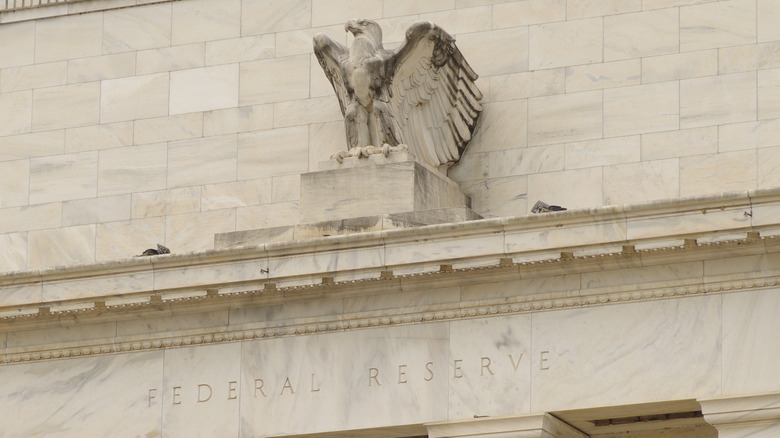Do Mortgage Rates Go Down With Fed Rate Cuts?
When the Federal Reserve cuts rates, homeowners often wonder if mortgage rates will follow. However, while the connection isn't exactly as straightforward as that, the Fed's decisions can definitely influence home borrowing costs. When the central bank cuts interest rates — like it did on September 17, 2025 — it lowers the federal funds rate, which is the interest rate that banks charge each other for overnight loans. This means it is not a cut to mortgage or credit card interest rates specifically.
In fact, mortgage rates are not pegged to the federal funds rates at all, but are instead influenced by the country's economic health and the bond market. With that said, a cut to the federal funds rate can still lower mortgage rates if investors believe that the move signals future economic weakening. This can then prompt investors to purchase safer government-backed bonds which, in turn, can impact mortgage rates. However, on the other hand, if economic data remains strong, rates could hold steady or even go higher. In short, while there is a chance of lower mortgage rates later in 2025, lenders will ultimately make their decision on a variety of data that is not fundamentally tied to the Federal Reserve's decisions. With that said, the September rate cut was mostly predicted and already priced into the market weeks before the announcement — with the 30-year fixed mortgage interest rate preemptively lowered from 6.5% to 6.35%.
Navigating interest rates as a would-be homebuyer
During the September meeting, the Federal Reserve hinted at further cuts by the end of the year. If the Federal Open Market Committee (FOMC), the 12-person voting group that decides on interest rates, votes for further cuts, it will most likely happen during their upcoming October and December meetings. Still, even if the Fed follows through, homebuyers shouldn't expect mortgage rates to drop immediately. Instead, mortgage lenders will watch for additional data on inflation, employment reports, broader economic conditions, and the bond market before making any decisions on rates.
This uncertainty can explain why potential home buyers are waiting on the sidelines for rates to fall. Even a small drop can make the huge difference to their ability to buy. Currently, many potential home buyers are only considering making a purchase if rates fall below 6% – a threshold that would make their monthly payment more manageable. While the 30-year fixed mortgage is currently averaging 6.35%, that's still a significant difference. For example, a $450,000 home with a 20% down payment and a 30-year mortgage at 6.35% would result in a monthly payment of $2,240 per month for just the principal and interest. Over the life of the loan, this higher rate would cost an additional $29,000 due to interest when compared to a flat 6% rate.

